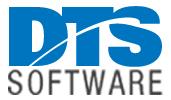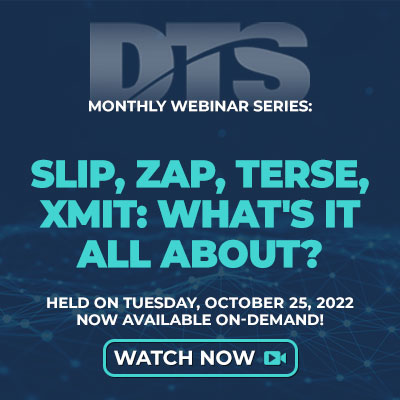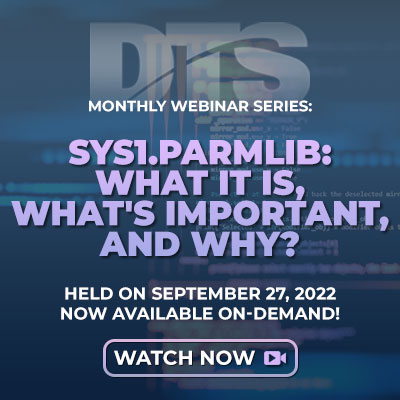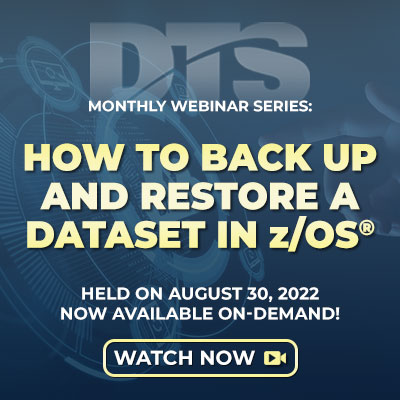A Healthy IT Ecosystem Works Together to Survive and Thrive, Especially in Difficult Times
As in all aspects of life, when it comes to the mainframe ecosystem there are givers and there are takers. Sure, rule number one is we’re all in business to make money for the company. But a side note to that is we’re all fighting the same battle against a general lack of knowledge and acceptance of the mainframe outside the confines of the mainframe ecosystem. If we had a dollar for every time we heard, “the mainframe is dead,” we could all go on vacation!
A Year to Rebound
A bright, shining light in the mainframe space in 2022 was a successfully completed schedule of face-to-face conferences and trade shows held around the globe. DTS was a proud sponsor of several key events, our CTO Steve Pryor was once again a sought-after speaker, and our team was thrilled to be able to attend them in person.
But one thing we heard over and over is that it is becoming harder and harder to generate revenue from new mainframe software sales. So, what did one of the larger vendors in the space do? They raised their rates as much as 40%. Will it work? Time will tell.
It’s up to all of us to be advocates for the IBM Z® space – and even for our competitors to some degree – to keep the mainframe industry strong and relevant across all of IT. So, when we hear about business practices outside what is considered the “accepted norm,” we think it’s cause for alarm.
At DTS, our goal has never been to be the biggest software vendor. Just the best. This means, among other things, keeping our rates at a fair level and NEVER jacking them up exponentially once a customer becomes dependent on our products.
Complimentary Webinar Series Pays It Forward, Paves the Way for Efficiency
Another way DTS stands out from the field is our Complimentary Monthly Educational Webinar Series. We talk a lot about the importance of the transfer of knowledge to the next generation of mainframers. This is one of the many ways we contribute to the collective knowledge base of the industry, and we’re thrilled when the knowledge gained results in real savings and operational efficiencies for our customers.
Case in point, after attending one of our free webinars, an existing client was convinced we could provide the solution they’d been looking for, both in problem-solving assistance and upgrading legacy code without learning less-utilized coding languages.
The client is one of the largest international communications companies in the world, supporting hundreds of thousands of users, and the data and applications those users consume. But like many mainframe shops of today, they lacked extensive knowledge of assembler and PL/1 languages.
They had many obsolete, highly customized installation exits from decades past and were having a specific problem involving emergency logons to TSO. You can read more about how DTS engineers were able to formulate a quick, user-friendly solution to rewriting legacy exits, saving the client time, money, and frustration in this Case Study.
With our Easy/Exit product and a team of seasoned storage management experts behind it, the client was able to continue operating within their existing z/OS® environment, avoiding a costly mainframe hardware upgrade with services.
More Efficiency with Automated Storage Management for Fortune 500 Financial Client
Another recent success story is from a Fortune 500 client who came to us looking for help in their IT modernization initiatives. Their legacy systems were governed by JCL dating back decades, and they needed software that could help them update code without taking up much of their systems administrators’ time and effort.
This client has been in business for nearly half a century and has a vast IT environment with a dozen production systems and many more test LPARs in several data centers across the US, along with hundreds of analysts and tens of thousands of end-users. As one of the largest financial services organizations in the world operating in a heavily regulated industry, disruptions, downtime, and noncompliance were unacceptable.
They needed help implementing automation for their repeatable storage management tasks, which freed up human resources so they could focus on other more valuable modernization initiatives. The solution needed to be easy to learn, quick to deploy, and come with a competitive total cost of ownership.
Our ACC (Allocation Control Center) Monarch solution was deployed to enable them to run more reliable jobs with fewer failures while enforcing SMS standards and preventing unwanted time and resource-consuming disk allocation and space errors. With ACC Monarch, the financial services company was able to automate much of its workflow so that its programmers no longer had to manage dataset policy through a series of emails and memos.
According to their Datacenter Manager, “DTS helped us standardize and automate some modernization initiatives we had taken on. Their policy rules engine was simple and pretty straightforward, enough so that our less-experienced storage admins could manage batch jobs without interrupting more seasoned programmers who had the JCL experience.” You can read more about it in this Case Study.
Better Products. Better Pricing. Better Vendor.
DTS Software has been a leader in storage management for over 30 years. We know that to be around for another 30 years, we have to do business with integrity with an eye on much more than just our bottom line. Contact us at info@dtssoftware.com to schedule a demo or start your free one-year trial of any DTS product.




